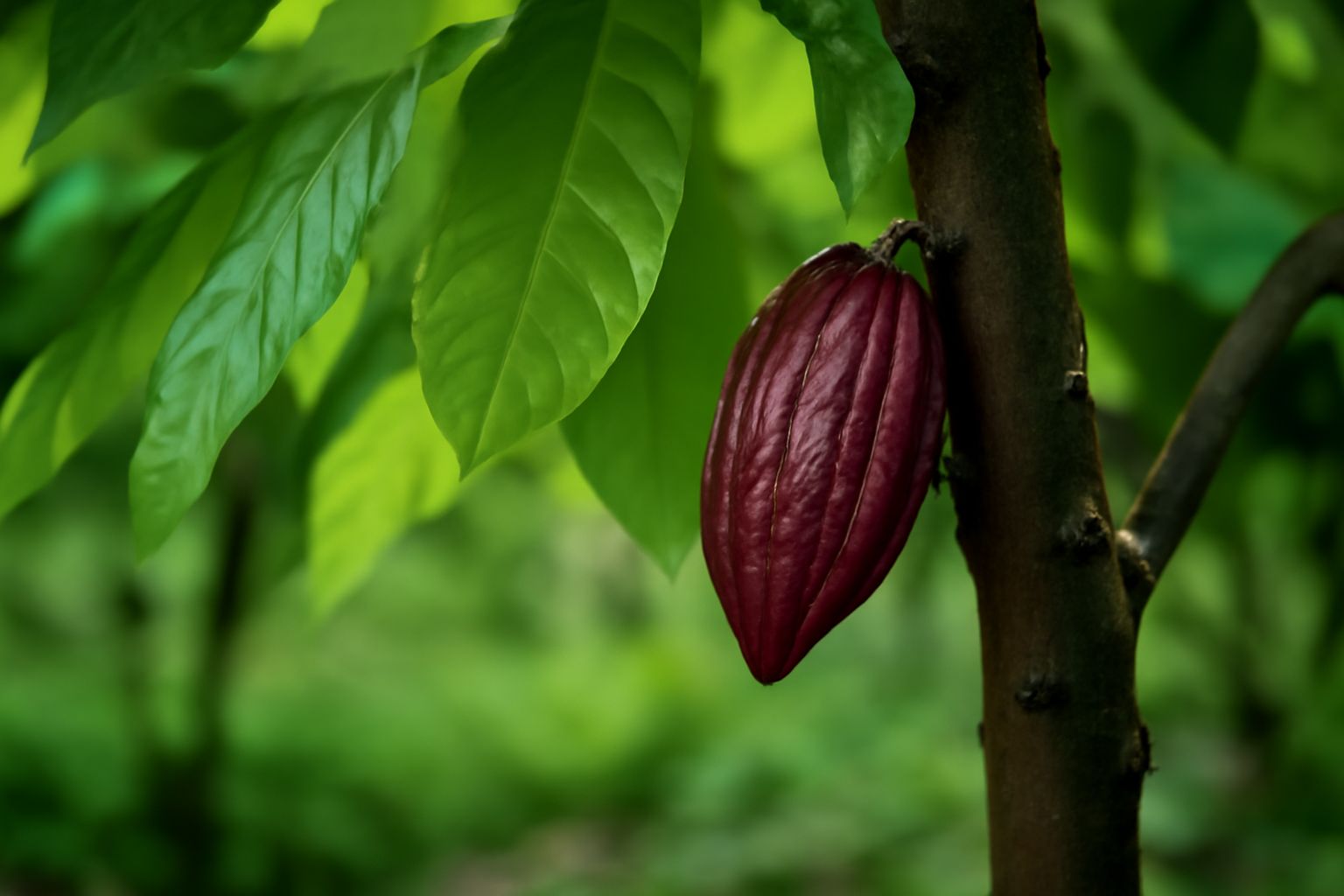Inside the Process: How Organic Cocoa Powder Is Made

Have you ever wondered how organic cocoa powder is made?
From the rich cacao pods growing deep in tropical forests to the earthy powder in your kitchen cabinet, the journey of cocoa is a story of transformation.
It’s not just about making chocolate or your favorite cup of hot cocoa—it’s about preserving nature’s integrity in every step.
Organic cocoa powder is more than an ingredient.
It’s a reflection of how food should be: pure, sustainable, and crafted with care.
At Wild Foods, we believe in reconnecting people with real food, and few ingredients represent that better than organic cocoa.
When you understand how it’s made, you start to appreciate why it tastes—and feels—so different.
Let’s walk through that journey together.

How Is Organic Cocoa Powder Made?
Organic cocoa powder begins with the cacao tree.
These trees thrive in humid, shaded environments near the equator.
Each cacao pod holds dozens of seeds, known as cacao beans—the raw form of cocoa.
Farmers harvest these pods by hand to protect the delicate trees and maintain sustainable growing practices.
Once harvested, the pods are split open, and the beans are removed along with their natural pulp.
That’s where the transformation begins.
From Cacao Pods to Beans
The freshly harvested beans are placed in shallow wooden boxes or covered with banana leaves.
This starts the fermentation stage, a crucial step that defines the flavor of cocoa (1).
Fermentation can last up to a week.
During this time, natural yeasts and bacteria break down the sugary pulp surrounding the beans.
The heat generated in this process changes the beans’ color from white to a deep brown and brings out their chocolatey aroma.
No chemicals, no additives—just nature doing its work.
Fermentation and Drying: Where Flavor Is Born
The beans are stretched out to dry in the sun after fermentation.
This step reduces moisture content and locks in the flavor that will later define the quality of the cocoa powder.
In organic production, this drying process avoids artificial heat sources to prevent nutrient loss.
It’s slower, but it preserves the beans’ natural compounds.
The dried beans are then ready for the next stage—roasting.
Roasting the Beans for Aroma and Depth
The rich, complex flavors that make cocoa so alluring are enhanced by roasting.
To create their own distinctive character, each grower or roaster modifies the temperature and duration a little.
Harsh heat that could damage minerals and antioxidants are avoided when roasting organically.
When done correctly, the beans release their entire perfume, bringing that comforting chocolate scent into the air.
The earthy depth of genuine chocolate starts to show here.
Grinding and Pressing: Separating Cocoa Butter and Powder
After roasting, the beans are cracked open to remove their shells, leaving behind cacao nibs.
Although it doesn't contain alcohol, these nibs are mashed into a thick paste known as chocolate liquor.
Through mechanical pressing, the natural fat, known as cocoa butter, is separated from the solid part of the paste.
What remains after pressing is the dry cake that becomes cocoa powder.
It’s then ground into a fine, aromatic powder that you recognize instantly.
Organic producers skip chemical solvents and additives, keeping the product as natural as possible.
Refining and Packaging: Keeping It Pure
Once the powder is ready, it’s sifted for consistency and checked for purity.
Organic certification ensures that no synthetic additives, flavor enhancers, or alkalizing agents are used.
Every batch is tested to guarantee quality and traceability from farm to package.
That’s how organic cocoa powder maintains its integrity—free from shortcuts, full of authenticity.
When you scoop it into your smoothie or bake with it, you’re tasting the result of a careful, honest process.

What Makes Cocoa Powder Organic?
Organic cocoa powder starts with the soil.
Farms must be free from synthetic fertilizers, pesticides, and genetically modified organisms.
Instead, farmers rely on compost, crop rotation, and biodiversity to keep their soil healthy (2).
The goal is sustainability—supporting the planet as much as the people who grow the beans.
This respect for nature is what gives organic cocoa its rich taste and nutritional edge.
Each spoonful carries the story of care from the ground up.
Organic vs. Conventional Cocoa Powder
Alkalization, also known as Dutch processing, is a common procedure used to darken and lessen the bitterness of conventional chocolate.
But that process also eliminates natural flavorings and antioxidants (3).
Because organic cocoa isn't alkalized, more of its original nutrients are retained.
Though it may appear lighter, organic chocolate has a richer flavor (4).
Wild Foods celebrates genuineness
Is Organic Cocoa Powder Healthy?
Yes, and for more reasons than taste.
Organic cocoa powder is packed with flavonoids, plant compounds that may help reduce inflammation and support heart health (5).
It’s also a natural source of magnesium, iron, and fiber.
When taken in moderation, it can help increase energy and mood without the need of drugs or additional sugar.
Add it to your smoothies, oatmeal, or Wild Cocoa drinks for a dose of natural goodness.
Your body recognizes real food—and responds accordingly.

How to Make Cocoa Powder at Home (The DIY Way)
If you're wondering how to create cocoa powder at home, the processes are similar to the conventional ones, but they're done on a smaller scale.
Start with cocoa beans or nibs that are organic.
They should crack and smell nutty after being gently roasted in the oven.
After cooling, pulse the nibs until they are pulverized in a high-speed blender.
To maintain its nutrition and flavor, keep it in an airtight jar.
It's as authentic as it gets, but it won't be as smooth as powder that has been commercially ground.
Making your own cocoa brings back
It won’t be as smooth as commercially ground powder, but it’s as real as it gets.
Homemade cocoa reminds you of the simple beauty in crafting your own food.
How to Know If Cocoa Powder Is Truly Natural
Look for the words non-alkalized, organic, and single origin on the label.
Avoid products with fillers or artificial flavorings.
True organic cocoa will list only one ingredient—organic cocoa powder.
At Wild Foods, transparency matters.
Each product is traceable back to the source, supporting small farmers and sustainable ecosystems.
That’s how you know you’re getting the real thing.
Final Thoughts
Every step of making organic cocoa powder is a reminder of nature’s craftsmanship.
From the slow fermentation of cacao beans to the final grind, the process honors purity and patience.
When you choose organic cocoa, you’re not just picking a healthier ingredient.
You’re choosing a philosophy—a return to what’s real, sustainable, and wild.
The same way each cocoa bean finds its way from forest to cup, you can rewild your diet one choice at a time.
Explore Wild Foods’ ethically sourced cocoa and taste how nature intended chocolate to be—pure, unprocessed, and full of life.
FAQs About How Organic Cocoa Powder Is Made
What is organic cocoa powder made of?
It’s made from fermented, roasted, and ground cacao beans grown without chemicals or additives.
How is organic cocoa powder made?
Cacao beans are fermented, dried, roasted, pressed, and ground into a fine, pure powder.
Is organic cocoa powder healthy?
Yes. It’s rich in antioxidants, magnesium, and natural compounds that support mood and heart health.
What’s the difference between cocoa and organic cocoa?
Organic cocoa is chemical-free and non-alkalized, while regular cocoa often uses synthetic processing.
How can you tell if cocoa powder is natural?
Look for “organic,” “non-alkalized,” and “single origin” on the label to ensure purity.
Related Studies
1. Title: Dynamics of cocoa fermentation and its effect on quality
Summary: This study investigates how microbial activity during cacao fermentation, including natural yeasts and bacteria, influences biochemical changes that develop the flavor, aroma, and quality of cocoa beans.
Link: https://www.nature.com/articles/s41598-021-95703-2
3. Title: Organic cocoa farmer's strategies and sustainability
Summary: This study analyzes sustainability practices in organic cocoa farming, showing that multi-crop systems improve soil health, biodiversity, productivity, and social resilience compared to monoculture approaches.
Link: https://oaj.fupress.net/index.php/bae/article/view/13473
4. Title: Alkalized and non-alkalized cocoa - what's the difference?
Summary: This article discusses the nutrient differences between alkalized (Dutch-processed) cocoa and non-alkalized natural cocoa, highlighting that alkalization reduces polyphenol antioxidants by up to 98% but improves taste and solubility.
5. Title: Review on the Biological and Bioactive Components of Cocoa: Theobroma Cacao Insight
Summary: Comprehensive review of cocoa's antioxidant bioactive compounds, especially flavonoids, demonstrating their efficacy in reducing oxidative stress and supporting cardiovascular and neuroprotective health benefits.
5. Title: Cocoa Flavanols and Cardiovascular Health
Summary: Reviews evidence that cocoa flavanols improve cardiovascular health by inhibiting platelet activation, enhancing endothelial function, and supporting nitric oxide production for better vascular function.
